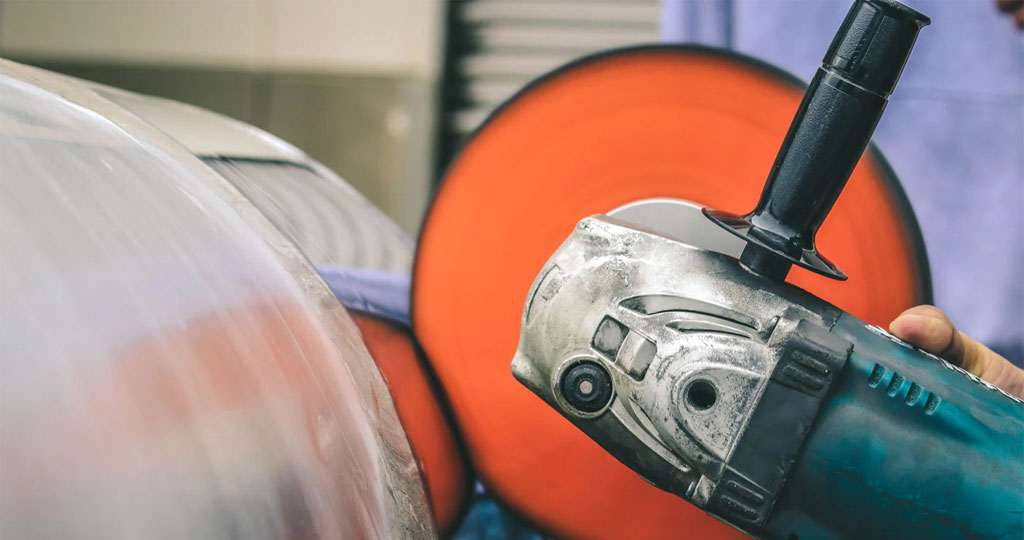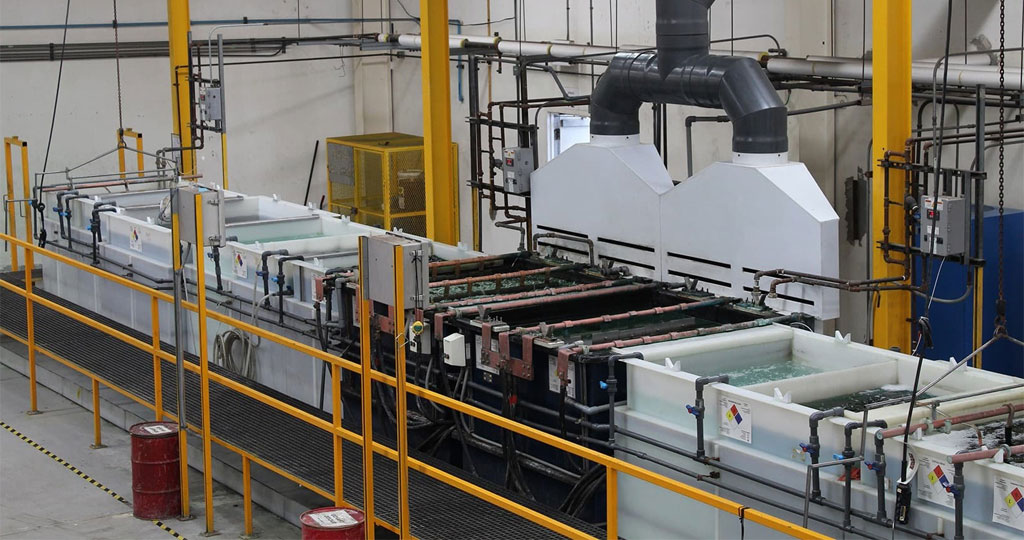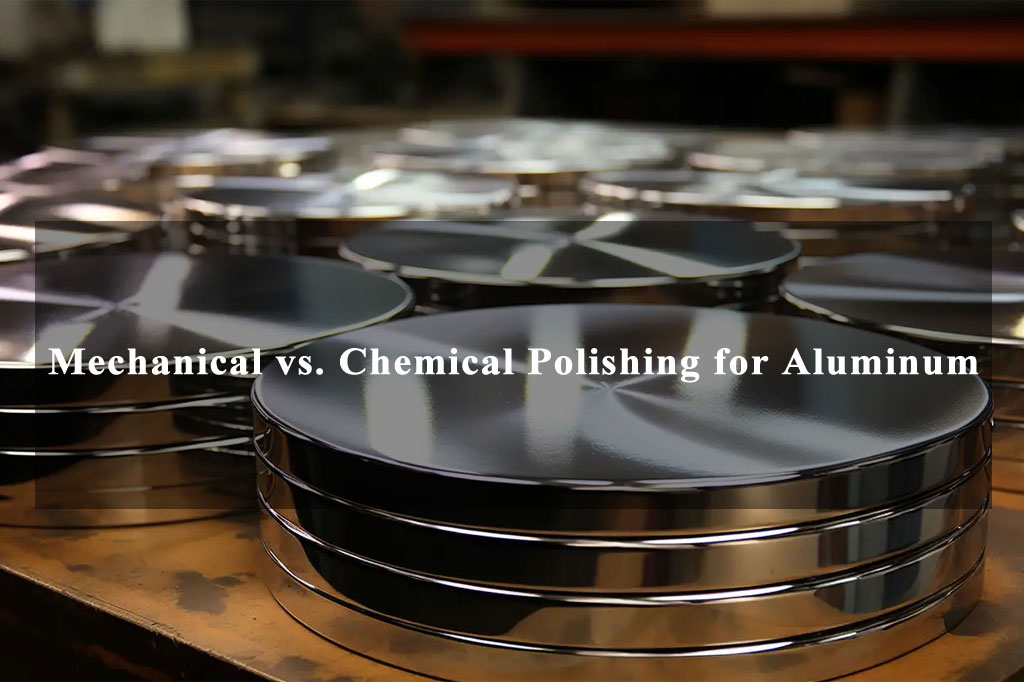Aluminum is widely used in industries such as aerospace, automotive, electronics, and construction due to its lightweight, corrosion resistance, and excellent machinability.
However, to enhance its appearance and performance, aluminum surfaces often require polishing. Two primary polishing methods are mechanical and chemical polishing, each with its advantages and drawbacks.
This article will compare these methods in terms of process, effectiveness, cost, applications, and environmental impact to help you determine which method is best suited for your needs.
1. Understanding Mechanical Polishing

Mechanical polishing involves using abrasive materials and mechanical force to smooth and refine the surface of aluminum. This method utilizes grinding wheels, sandpaper, buffing compounds, and polishing pads to remove surface irregularities and enhance shine.
How Does Mechanical Polishing Work?
The process of mechanical polishing typically involves multiple steps:
- Grinding: Coarse abrasives remove deep scratches and surface defects.
- Intermediate Polishing: Finer abrasives are used to smooth the surface.
- Buffing: A soft polishing wheel with a polishing compound is applied for a mirror-like finish.
Advantages of Mechanical Polishing
- High Precision: Provides excellent control over surface finish and texture.
- Immediate Results: The process is straightforward, efficient, and does not require complex chemical reactions or additional processing steps.
- Customizable Finish: Different abrasives and techniques can achieve various levels of shine.
- Lower Chemical Usage: Safer for workers compared to chemical methods.
Disadvantages of Mechanical Polishing
- Labor-Intensive: Requires skilled operators and significant manual effort.
- Surface Inconsistencies: May result in uneven polishing or micro-scratches if not performed correctly.
- Material Loss: Can lead to the removal of a thin layer of aluminum, which might affect precision components.
- Heat Generation: Friction from polishing can cause localized heating, potentially altering material properties.
2. Understanding Chemical Polishing

Chemical polishing, also known as electropolishing, involves immersing aluminum in a specially formulated chemical solution that dissolves microscopic surface imperfections. This method is often used to achieve a high-gloss, corrosion-resistant finish.
How Does Chemical Polishing Work?
- Surface Preparation: Aluminum is cleaned to remove contaminants.
- Chemical Immersion: The material is submerged in a chemical bath containing acids and oxidizers.
- Reaction Process: The solution selectively dissolves rough surface areas, resulting in a smoother finish.
- Rinsing and Neutralization: The aluminum is rinsed and treated to remove residual chemicals.
Advantages of Chemical Polishing
- Uniform Surface Finish: Produces a smooth, even surface without visible scratches.
- Non-Contact Process: No mechanical stress or abrasion is applied to the material.
- Improved Corrosion Resistance: Enhances the passive oxide layer, improving durability.
- Efficient for Complex Shapes: Reaches intricate areas that mechanical polishing cannot.
Disadvantages of Chemical Polishing
- Chemical Handling Risks: Requires strict safety measures due to the use of strong acids.
- Limited Control Over Finish: Cannot achieve the same level of surface customization as mechanical polishing.
- Environmental Concerns: Produces chemical waste that must be properly disposed of.
- Higher Initial Costs: Setting up chemical polishing requires investment in specialized equipment and solutions.
3. Comparing Mechanical and Chemical Polishing
| Factor | Mechanical Polishing | Chemical Polishing |
|---|---|---|
| Surface Finish | Can achieve a high gloss but may have micro-scratches | Produces a smooth, mirror-like finish with no abrasions |
| Precision | Offers precise control over material removal | Less precise, relies on chemical reaction |
| Material Loss | Can remove significant material | Minimal material removal |
| Processing Speed | Slower, requires multiple steps | Faster, as it works on the entire surface at once |
| Labor Requirement | High, requires skilled workers | Lower, mostly automated or chemical-based |
| Equipment Cost | Lower initial investment | Higher due to chemical handling infrastructure |
| Safety & Health | Generates dust, requires PPE | Requires strict chemical handling precautions |
| Environmental Impact | Produces metal dust and noise | Produces hazardous chemical waste |
| Best for | Flat and simple parts, customized finishes | Complex shapes, corrosion resistance |
4. Applications of Mechanical and Chemical Polishing
Mechanical Polishing Applications
- Automotive Components: Aluminum wheels, engine parts, and decorative trim.
- Aerospace Industry: Aircraft structural parts requiring high-precision finishes.
- Consumer Goods: Laptops, smartphones, and home appliances.
- Medical Devices: Instruments and tools requiring a smooth, burr-free surface.
Chemical Polishing Applications
- Electronic Components: Aluminum heat sinks and casings.
- Food Processing Equipment: Surfaces requiring easy cleaning and corrosion resistance.
- Pharmaceutical Industry: Aluminum medical packaging and storage containers.
- Architectural Applications: Aluminum panels and decorative elements.
5. Environmental and Safety Considerations
Environmental Impact
- Mechanical Polishing: Produces fine dust and waste from abrasives, but can be mitigated with proper filtration and dust collection.
- Chemical Polishing: Involves hazardous chemicals that require proper disposal to prevent environmental contamination.
Safety Measures
- Mechanical Polishing: Workers must wear protective gear, including masks, goggles, and gloves, to prevent aluminum dust inhalation.
- Chemical Polishing: Requires proper ventilation, protective suits, and chemical-resistant gloves due to exposure to corrosive acids.
6. Which Method is Better?
The best polishing method depends on your specific application and requirements.
- Choose Mechanical Polishing if:
- You need precise control over the finish.
- The surface must be manually refined or customized.
- The workpiece is large and relatively simple in shape.
- You prioritize cost-effectiveness over automation.
- Choose Chemical Polishing if:
- You need a highly uniform, mirror-like finish with minimal effort.
- The component has complex shapes and hard-to-reach areas.
- Corrosion resistance is a priority.
- You prefer a faster, automated process despite higher initial costs.

